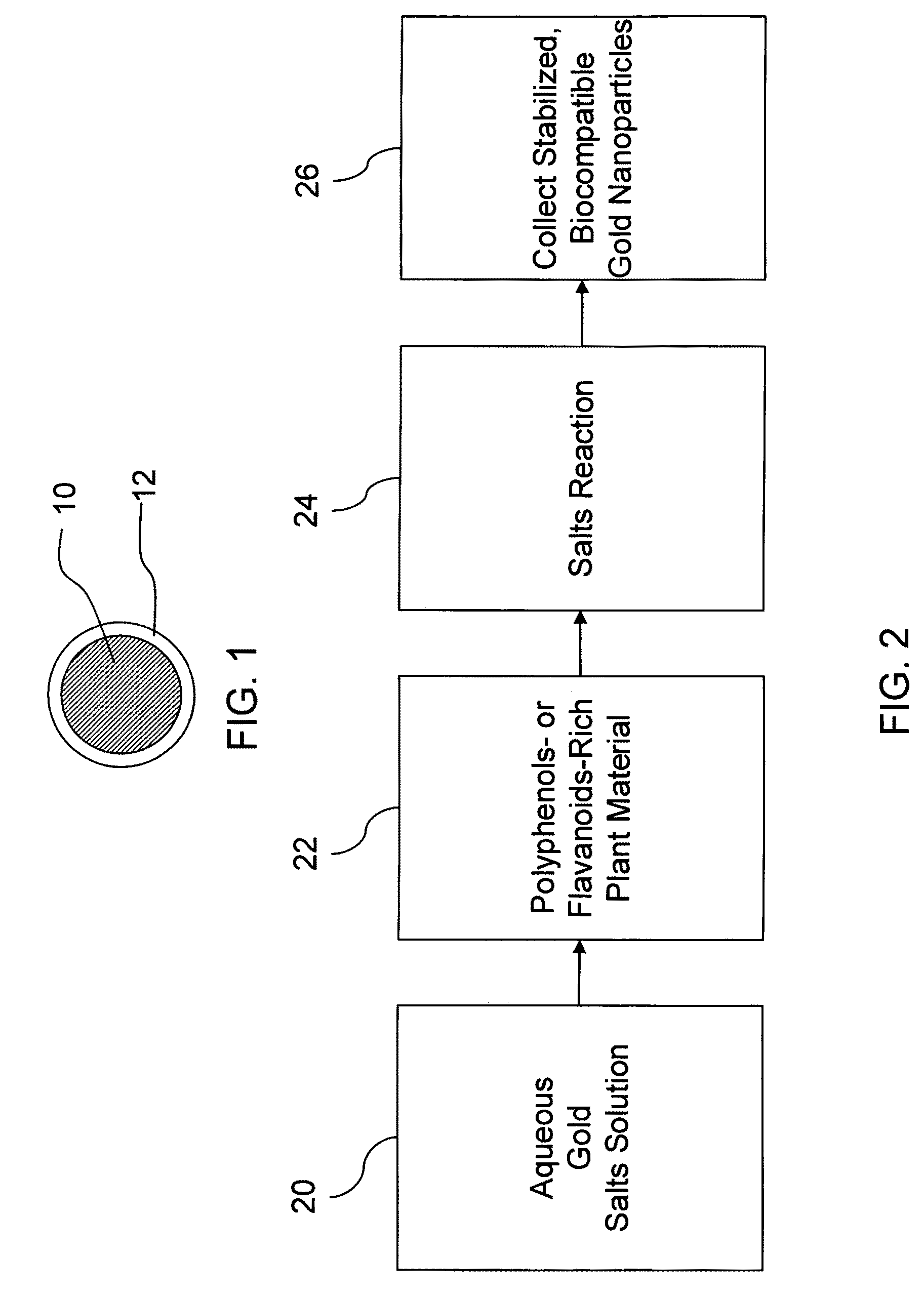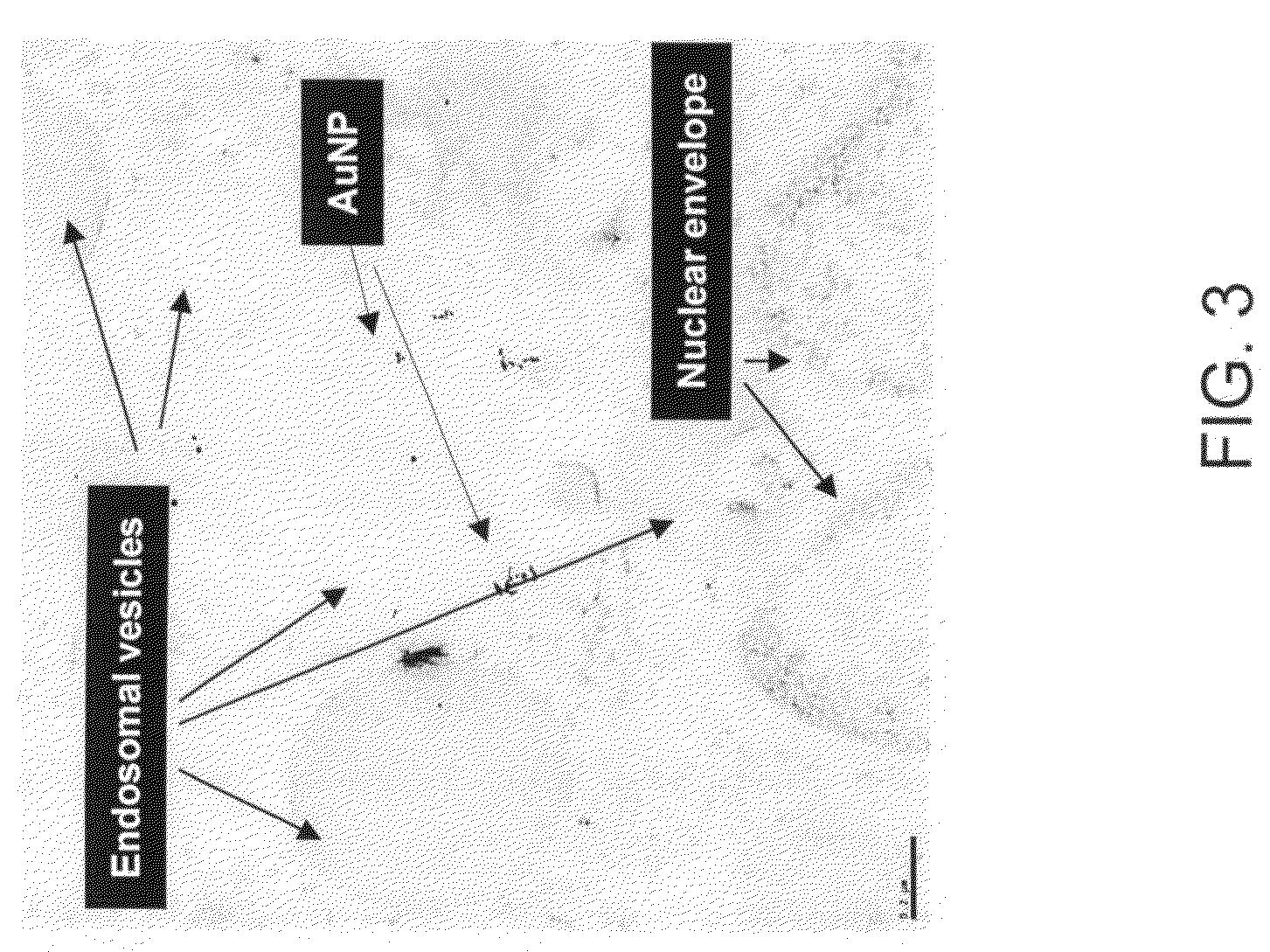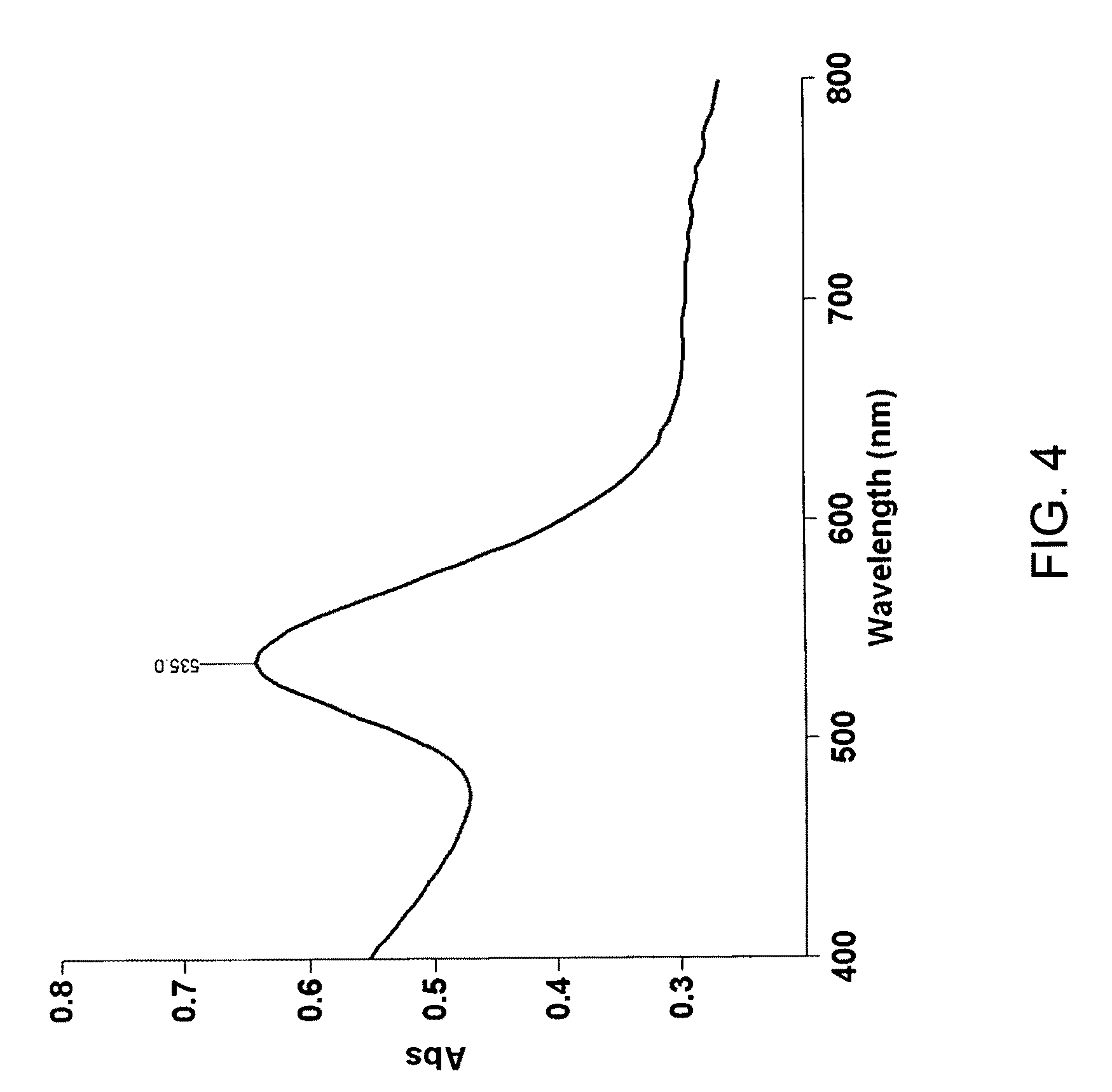Stabilized, biocompatible gold nanoparticles and enviro-friendly method for making same
a biocompatible, nanoparticle technology, applied in the field of gold nanoparticles, can solve the problems of reducing or obliterating the nanoscale properties of nanoparticles, unsuitable in the presence of target specific peptides, and eliminating the biospecificity of biomolecules
- Summary
- Abstract
- Description
- Claims
- Application Information
AI Technical Summary
Problems solved by technology
Method used
Image
Examples
example preferred
[0023 embodiments for making gold nanoparticles include steps of reacting a gold salt with polyphenols- or flavanoids-rich plant based materials to produce biocompatible gold nanoparticles. Exemplary polyphenols- or flavanoid-rich plant materials include tea, cinnamon, turmeric or curcumin. In exemplary methods of the invention, very high conversion is achieved in relatively short times and at room temperature. Embodiments of the invention include biocompatible gold nanoparticles produced through this environmentally friendly process.
[0024]Preferred embodiments will now be discussed with respect to the drawings. The description includes descriptions of experiments. The drawings include schematic figures that are not to scale, which will be fully understood by skilled artisans with reference to the accompanying description. Features may be exaggerated for purposes of illustration. From the preferred embodiments and experiments, artisans will recognize additional features and broader ...
PUM
| Property | Measurement | Unit |
|---|---|---|
| size | aaaaa | aaaaa |
| pH | aaaaa | aaaaa |
| path length | aaaaa | aaaaa |
Abstract
Description
Claims
Application Information
 Login to View More
Login to View More - R&D
- Intellectual Property
- Life Sciences
- Materials
- Tech Scout
- Unparalleled Data Quality
- Higher Quality Content
- 60% Fewer Hallucinations
Browse by: Latest US Patents, China's latest patents, Technical Efficacy Thesaurus, Application Domain, Technology Topic, Popular Technical Reports.
© 2025 PatSnap. All rights reserved.Legal|Privacy policy|Modern Slavery Act Transparency Statement|Sitemap|About US| Contact US: help@patsnap.com



